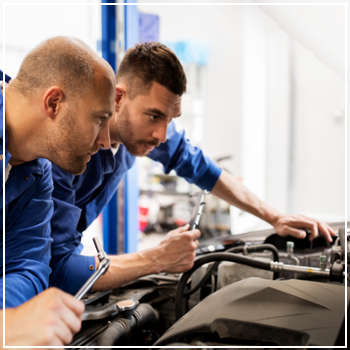 Computer systems control nearly all modern-day car functions. This technological shift has lightened the average vehicle weight, streamlined its operations and introduced key safety features, including automatic emergency braking, blind-spot detection and forward-collision warnings. While these factors help decrease accident statistics, they have affected repair costs. Particularly, what may seem like a reasonable price for standard work is now much higher than it was five years ago.
Computer systems control nearly all modern-day car functions. This technological shift has lightened the average vehicle weight, streamlined its operations and introduced key safety features, including automatic emergency braking, blind-spot detection and forward-collision warnings. While these factors help decrease accident statistics, they have affected repair costs. Particularly, what may seem like a reasonable price for standard work is now much higher than it was five years ago.
Rising Repair Costs
One recent article pointed to these inflating costs, citing work needed to repair a left front corner hit on a Kia K900 as $34,000. What might have been treated as a typical fender-bender in the recent past now causes damage to the car’s safety system.
According to the U.S. Bureau of Labor Statistics, prices for car repairs have gone up more than 60 percent over the past 15 years. What’s behind this change?
More Electronic Components
Technology to increase safety is no longer exclusive to luxury vehicles. Rather, more accessible models sport it as a key feature. Newer models typically have more electronic components which, in turn, add multiple layers to the repair process.
Beyond the knowledge a technician must possess and the process needed to get the vehicle road-ready again, an accident’s damage extends far beyond the surface:
- Common points of impact, including bumpers, fenders and side mirrors now house key safety components. In this case, a collision not only dents the part but may additionally damage the security system and blind-spot monitoring.
- Even when just painting is needed, the technician must ensure the safety system functions properly before the car is returned. If not, painting over the sensor affects its path and can influence how your car detects a hazard.
- Crumple zones have changed. Repairs done the old way may alter how a vehicle will crumple in the event of an accident. As a result, technicians need to make sure they follow the manufacturer’s specific guidelines.
- With these factors taken into account, a technician may need to replace full sections, rather than a single component.
- Your insurance carrier examines how often particular parts are stolen. According to figures from the National Insurance Crime Bureau, thefts have increased about four percent as manufacturers add more advanced components to vehicles. In turn, you and your insurance carrier have to pay more to replace that stolen part.
New Materials
A car’s operations aren’t the only new aspect. Models contain a range of materials, including steel, aluminum, magnesium and carbon fibers that are fairly commonplace. For your benefit, they create a lighter vehicle that improves fuel economy without compromising your safety. However, the more diverse composition affects how repairs get done in multiple ways:
- Safety Issues: Aluminum dust and steel dust can’t mix; that’s an explosion waiting to happen. For safety reasons, shops now have separate areas for working on aluminum components. Meanwhile, the change influences how much labor is needed.
- New Technology: Along with reconfiguring an auto body shop, tools to work on these new metals and the training to operate them turn into necessities.
- Higher Costs: When these new materials are compared to older plastic and metal components, costs increase by nearly 130 percent. Labor added on is about another 18 percent.
Recalibration
A technician does not simply repair a car’s systems and parts. Rather, all the driver assistance systems need to be recalibrated, which adds to the amount of labor involved. However, recalibration varies across models and manufacturers. The job might be done by a scanner, software or a short drive at a particular speed.
Although this process compounds repair costs, it’s essential for the functionality of the safety system and your experience on the road. Without it, your camera or sensor’s range might be shortened or positioned at an odd angle, preventing you from getting a full view.
Whether you have an older model or a vehicle with the latest systems, DaSilva’s technicians know how to diagnose and repair issues per the manufacturer’s specifications. If you’ve recently been in an accident or need routine maintenance, count on us to identify and fix the problem. To set up an appointment at our Naugatuck location, give us a call today.




